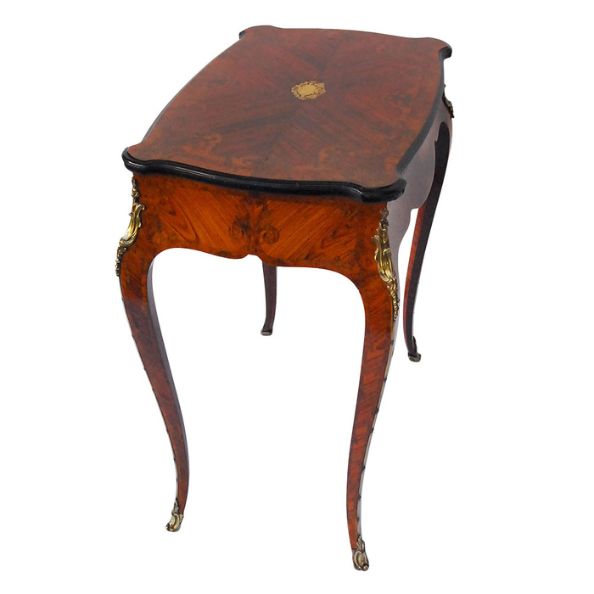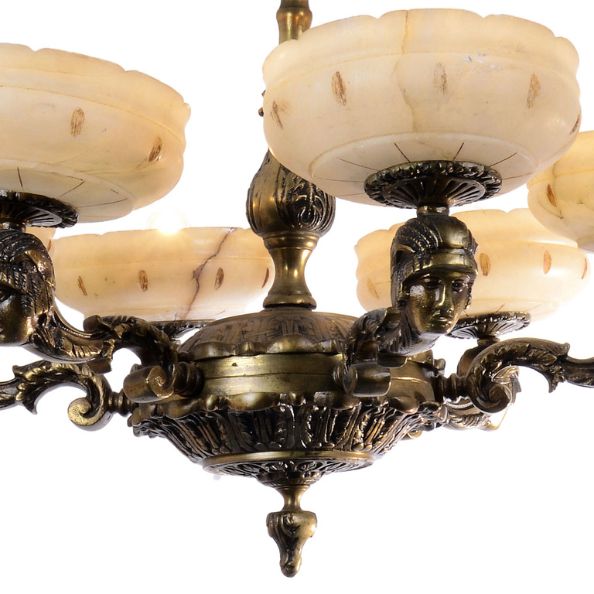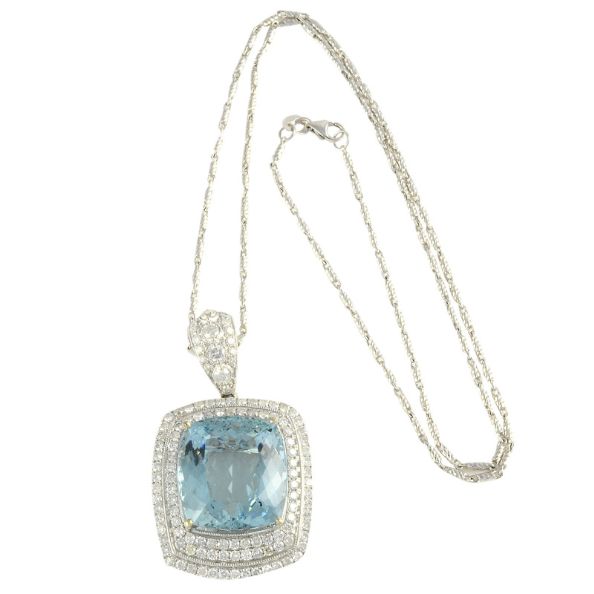Celebrating Musical Antiques – Part Two
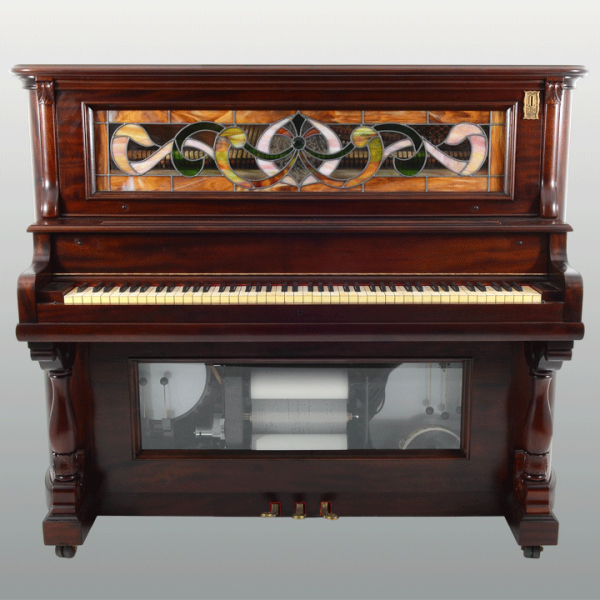
Welcome to our second installment of Celebrating Musical Antiques!
Make sure to read the first post of this series here!
Read on to learn more about early American phonographs and rarer musical antiques from the 20th century!
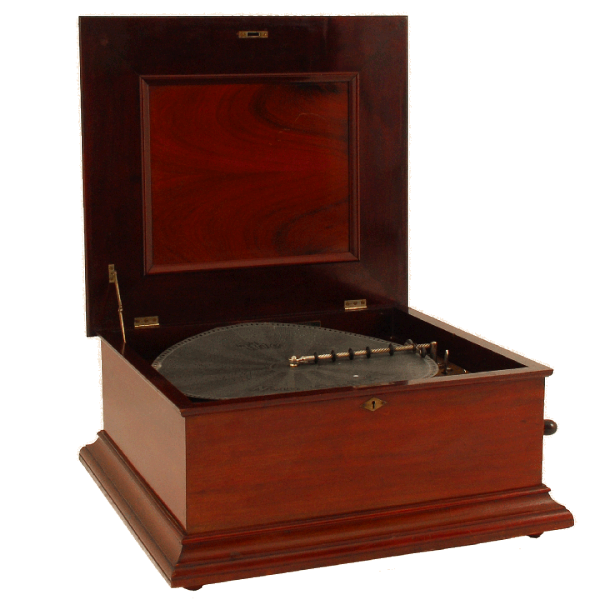
Double Comb Disc Music Box by New Century, circa 1890
Though music boxes had revolutionized the music industry of the West, new advancements in technology were soon to be the death knell of the music box industry. After their tragic and sudden fall from grace, it is said that warehouses of music boxes were burned as they were then considered obsolete. However, soon a new and advanced way to enjoy music was discovered: the phonograph.
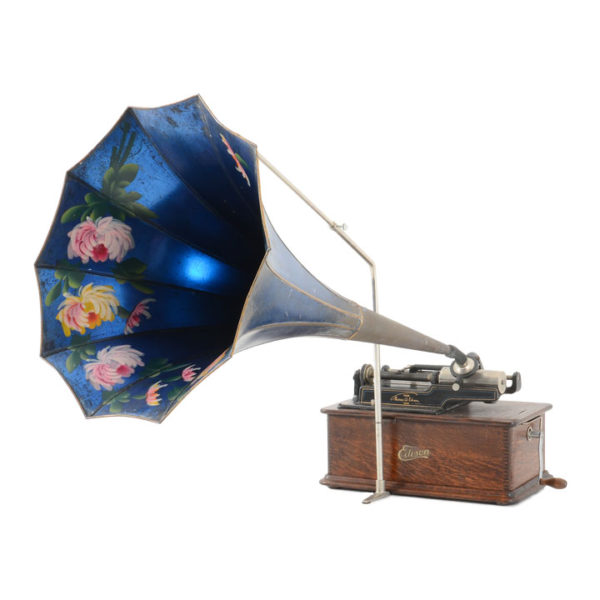
Edison Cylinder Phonograph With Oak Cabinet and Original Horn, circa 1905
The phonograph was developed as a result of Thomas Edison’s work on two other inventions, the telegraph and the telephone. In January 1896, he started the National Phonograph Company after he had bought back the rights to his inventions from businessman Jesse H. Lippincott, who had saw the potential use of the phonograph only in the business field. Within three years, branches of the company were located in Europe. Edison’s chief competitors abandoned the cylinder market for discs in the early 20th century, and although Edison argued the cylinder had better sound, by 1913 they too were manufacturing disc phonographs.
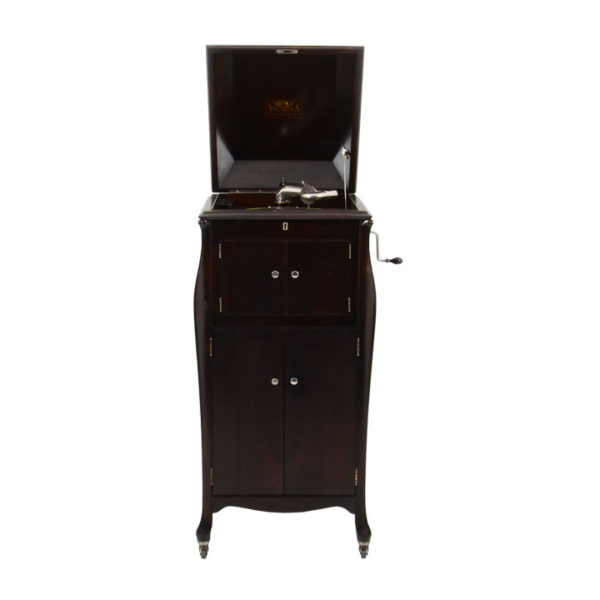
Mahogany Victor Disc Phonograph, circa 1915
Soon after phonographs became a standard way to listen to music, there were even more new discoveries in technology. The nickelodeon, a coin-operated player piano, was very popular in the 1920s. It is said that more than half of all pianos in America in the 1920s were automatic pianos. Nickelodeons were often outfitted with an orchestral element, often adding drums and string instruments.
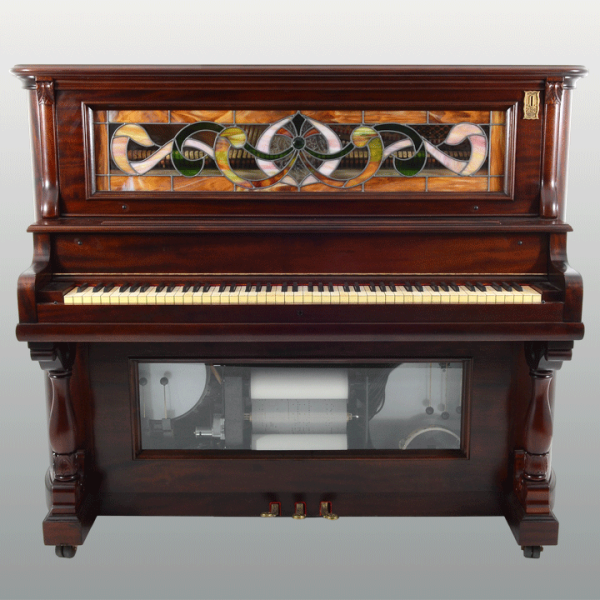
American Honduran Mahogany Stained Glass Orchestrion Nickelodeon With Bass, Snare Drums and Tambourine, circa 1920
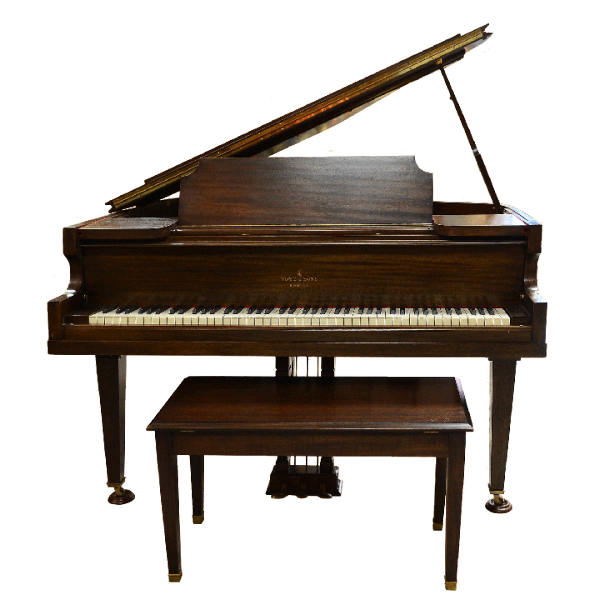
Walnut Baby Grand Piano by Vose and Sons, circa 1920
The Mills Violano Virtuoso stands among the most complicated and captivating automatic musical instruments ever produced. The musical arrangements are programmed on paper rolls and read by hundreds of wires that send signals to the violin and the piano mechanisms. The violin strings are played by four rotary bows, powered by a variable speed motor. It is capable of playing all four strings at once to create four part independent counterpoint and with an octave available on each string, the violin can reproduce 64 notes. The fretting of the strings is accomplished by remarkably fast and accurate steel fingers controlled by electromagnets. A magnetic coil vibrates the strings to create a vibrato effect.
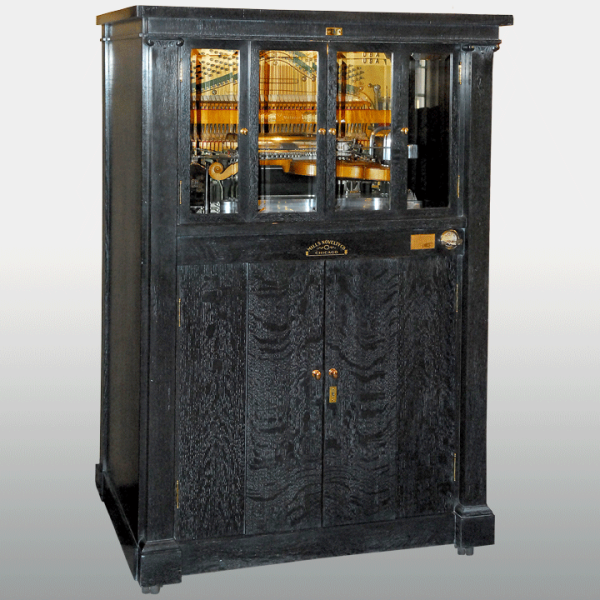
Mills Silver Fox Violano Virtuoso Playing Violin and Piano, circa 1927
In their day, Violanos performed in thousands of public venues and in the homes of the wealthiest families around the country and overseas. There was even one made for the Smithsonian Institute in 1914. Sadly, in today’s world, only a very small portion of the population will ever experience this machine in action and the wonderful live musical performances it renders.
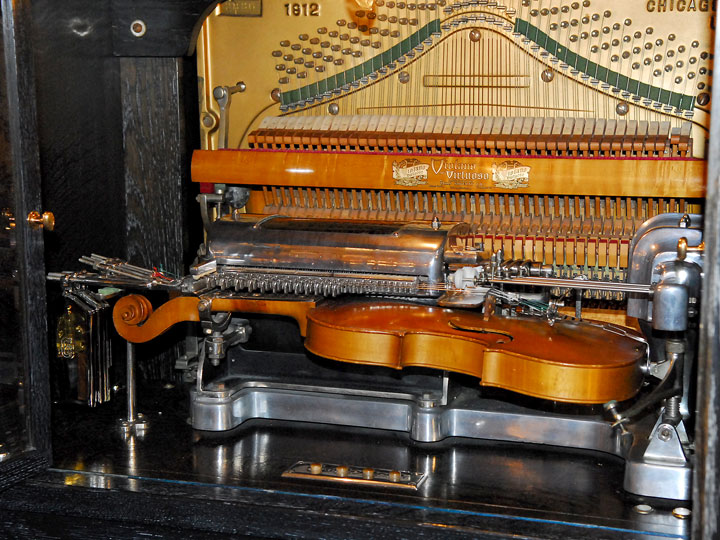
Its musical versatility allows it to handle every type of music from Classical and Operatic to frenetic Ragtime tempos.
To read the previous installment, chronicling antique music boxes, click here.
Learn more about our collection of musical antiques here.

